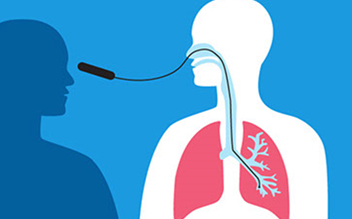
Flexible bronchoscopy is a procedure which allows pulmonologists or thoracic surgeons to examine the major air passages in the lungs. It is done with a bronchoscope, which is a flexible tube about as big as a ballpoint pen. The physician inserts the tube, either through the mouth or the nose, and passes it through the trachea (windpipe) down into the bronchi (airways in the lungs.) Through the bronchoscope, the doctor can see down into the lungs (via optical fibers in the bronchoscope). A bronchoscopy is done to investigate abnormalities in the lungs. Typical reasons for doing a bronchoscopy are hemoptysis (coughing up blood), an abnormal chest x-ray, or lung symptoms that cannot be explained.
© Copyright 2019 Powered by Carolina Pulmonary & Sleep Clinic. All Rights Reserved.